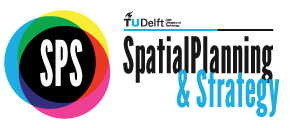 Our team has helped prepare a catalogue of good practices put forward by the WaVE project partners. This document brings together solutions in valorization of water-linked heritage from five European locations: the Municipality of Aarhus (DK), the Province of Alicante (ES), the Municipality of Breda (NL), Ister-Granum crossborder region (HU-SK) and the Municipality of Ravenna (IT). While in our methodology for knowledge transfer in the project, inspired by that developed in H2020 REPAiR project, we do emphasise the need to unpack what hides behind a ‘good practice’ (the real process that lead to it, with its ups and downs, tensions and conflicts, the specific contextual features that made this practice possible), the catalogue includes a wealth of excellent ideas for out-of-the-box thinking about water and heritage, both tangible and intangible. The practices were a source of inspiration and lessons for development of five action plans for water-linked heritage valorisation in the said locations. The use of those good practices is a great example of policy translation (see Stone, 2012), which was done in a process of co-creation of knowledge in an international network, with engagement of local stakeholders, both physically, before the pandemic struck, and online throughout 2020. Stay tuned to see the fruits of that process in the final action plans that will be available in 2021.
Our team has helped prepare a catalogue of good practices put forward by the WaVE project partners. This document brings together solutions in valorization of water-linked heritage from five European locations: the Municipality of Aarhus (DK), the Province of Alicante (ES), the Municipality of Breda (NL), Ister-Granum crossborder region (HU-SK) and the Municipality of Ravenna (IT). While in our methodology for knowledge transfer in the project, inspired by that developed in H2020 REPAiR project, we do emphasise the need to unpack what hides behind a ‘good practice’ (the real process that lead to it, with its ups and downs, tensions and conflicts, the specific contextual features that made this practice possible), the catalogue includes a wealth of excellent ideas for out-of-the-box thinking about water and heritage, both tangible and intangible. The practices were a source of inspiration and lessons for development of five action plans for water-linked heritage valorisation in the said locations. The use of those good practices is a great example of policy translation (see Stone, 2012), which was done in a process of co-creation of knowledge in an international network, with engagement of local stakeholders, both physically, before the pandemic struck, and online throughout 2020. Stay tuned to see the fruits of that process in the final action plans that will be available in 2021.
The WaVE project is concerned with the development of integrated adaptive reuses of water-linked cultural heritage sites in human settlements, both at the local and regional scales. The project capitalizes on interregional knowledge exchange to help improve policy instruments for integrated valorisation of cultural heritage related with water, to sparkle new ideas for engagement of stakeholders in this process, and to raise awareness of the potential of water-linked heritage to bridge different policy agendas, from place-making, to environmental protection, economic development and climate adaptation.
The good practices in the catalogue were classified according to four thematic foci. First is stakeholder engagement, which played a central role in the WaVE project. By stakeholder engagement we understand efforts to broaden the participation of citizens and other key stakeholders, from the private, public and non-governmental sectors, in valorisation of heritage. Practices related to this theme are concerned with participatory practices, story-telling around heritage to develop shared understandings, attract attention of stakeholders and galvanise participation, establishment of dialogue between parties affected or affecting heritage valorisation, means to foster new cooperations around heritage and to co-creation knowledge with stakeholders.
The second theme reflected in the good practices presented here is governance and planning. This theme relates to aspects of inter-institutional cooperation, multi-level governance (that is cooperation across levels of government and across the public, private and civil society sectors), and strategic planning (understood as efforts to foster and exploit synergies across policy sectors and agendas and/or between interventions implemented in different areas). This theme also encompasses practices that are linked to local (urban) planning practices (land use issues, zoning, regulation, etc.), dimensions of process management, and financing models (e.g. aspects of public-private partnership, combinations of funding streams).
The third theme reflects the core focus of the WaVE project, that is innovative approaches and practices in valorisation of water-linked heritage. This category includes a variety of practices not only at protection of cultural heritage, but using it as a vector for place-branding, identity-building. The practices in this category also can combine efforts in valorising both the tangible aspects of heritage (building, public spaces, infrastructure) and its intangible aspects, such as shared stories, local ways of doing things, traditional social, economic or cultural practices, methods of cultivating land, etc.
The final theme covered by the good practices collected in this catalogue refers to seeking synergies between protection and valorisation of cultural heritage in the built environment with efforts and policies to manage water, reduce flood risk, mitigate climate change impacts and protect or restore the natural environment. This theme reflects the holistic and eco-systemic approach to heritage valorisation that the WaVE projects strives to promote.
The catalogue can be accessed here. Enjoy reading.


